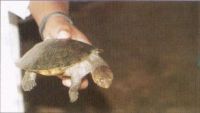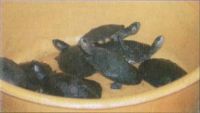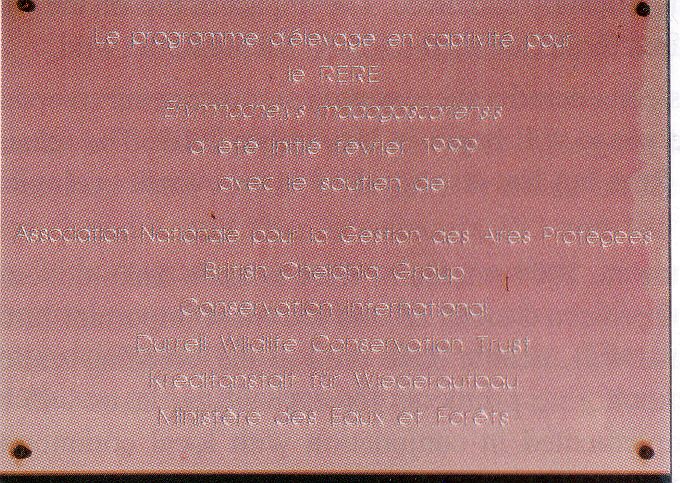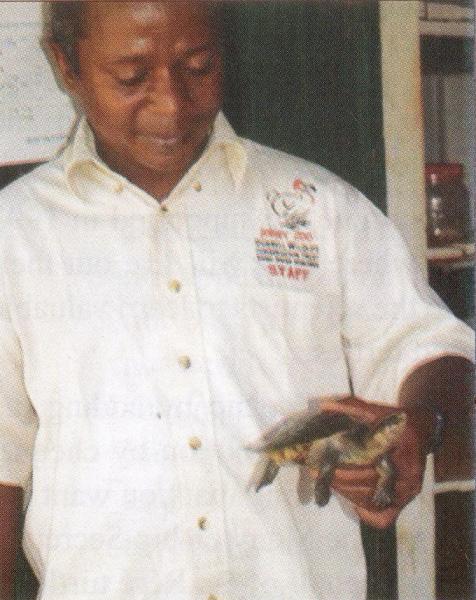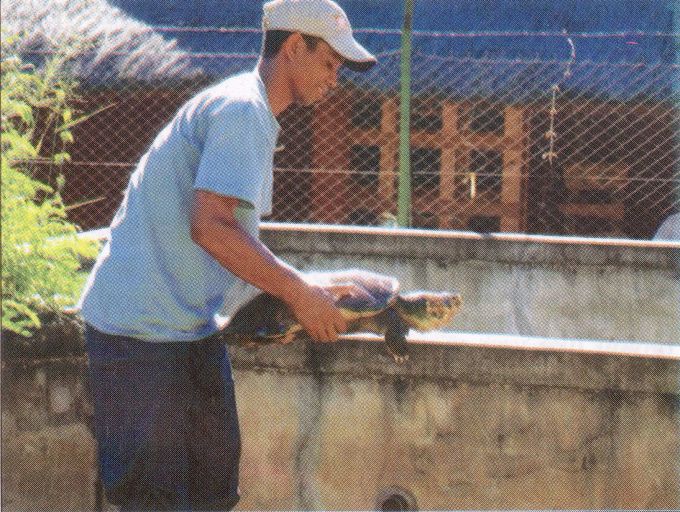The final stage for the support of the Réré returning to the wild
We need your support to follow up the successful breeding project of the critically endangered side-necked turtle, Réré (Erymnochelys madagascariensis in Madagascar)
The Réré (Erymnochely madagascariensis) is the only freshwater chelonian endemic to Madagascar. It represents a monotypic genus and subfamily (Erymnochelinae) and is the only Old World representative of the family Podocnemidae.
Adults can reach a maximum length of 50cm. It inhabits lakes, rivers and some marshes throughout western Madagascar, from the Mangoky River in the south to the Sambirano River in the north, up to a maximum altitude of 500m.
Despite having a wide distribution in the rivers and lakes of' Western Madagascar, the Réré is considered Critically Endangered.
The main cause of decline is due to capture (nets, traps and diving) for local consumption.
Collection of nesting females has a particularly heavy impact on the populations, since large females represent the vast majority of the reproductive potential in each population. Habitat degradation has also occurred but is considered to be a less important threat. Currently the species is protected in only three national parks.
Durrell started conservation work on the Réré in the Ankarafantsika National Park in 1998. The work was supported by funding from the BCG to construct the concrete tanks at the breeding station in Ankarafantsika. It was shown that even in the National Park, the populations had become depleted.
In 1997 the BCG launched a successful appeal to help in the breeding programme of these rare animals:
1997 The Madagascan RÉ-RÉ
'The donations to our 1997 Ré-Ré (Big-headed Side-necked Madagascar fresh water Turtle) Appeal have been flowing in steadily and generously throughout 1997. At mid Octoher the total stood at £3750 - a magnificent effort from a small charity as ourselves. Dr Lee Darrell of JWPT reports that construction of the captive breeding ponds at Ampijoroa will begin in March 1998 after the 97/98 rainy season.
The first of the captured Ré-Rés will find comfortable, safe homesfor breeding there in October 1998. The BCG has funded one of the ponds and a plaque will be put up there to records this is due course.'
The plaque is displayed at the entrance to the breeding station and the project has achieved a high level of success.
Over time Durrell has worked with local communities and authorities to develop conservation strategies for two watersheds in the park. As a result, two previously over-fished lakes are now strictly protected.
Parallel to this initiative a PhD was initiated by Durrell staff focused on increasing the knowledge of the species' biology and ecology and to identify the main causes of the decline of the species at Ankarafantsika
To assist with the recovery of the species in the park, Durrell began a captive-breeding project at the park, at the Ampijoroa Breeding Station where in 1998 the BCG funds were used in the construction of one of the ponds. There are currently 09 adults (06 males and 03 females) in captivity. Durrell has had to learn how to breed the Réré and had the first successful breeding in 2004 and in 2007 a record 52 juveniles were hatched.
Staff at this center are rightly proud of their achievement, the two personnel are Ernest Bekarany who heads the breeding facility at Ampijoroa and Floriot Randrianarimangason (in the blue t-shirt) who is a technician there.
Durrell has also managed a head-starting programme for Réré since 1999. Here wild hatchlings are taken into captivity and reared until they are of sufficient size, usually 3-5 years, and their chances of survival are significantly enhanced. The impact of this on the wild population is minimal. These captive-reared turtles are then released back into the wild.
The first phase of the 'headstarting' was considered a success with significant survivorship of released turtles and a second release phase will begin in November 2009. The release has not just improved the status of the Réré but has also resulted in an overall ecological improvement of the lake.
During 2010 the main focus is to monitor the 2009 release of Réré to Lake Ankomokomo and support the establishment of two of protected areas around the most important turtle lakes known in the country. This release will include Réré bred at the breeding station and supported by the BCG. Detailed monitoring protocols for each of the lakes will be developed. These protocols will be implemented in conjunction with local community development.
The 2009 release is the second and final stage undertaken. It is very important to monitor these animals closely. As Réré from different age classes are being released, we will also identify whether there are differences in survivorship. This release programme will serve as the model should there be a need to re-stock wetlands elsewhere in Madagascar. Durrell also aims to complete the establishment of two new protected areas at Lakes Tsimembo and Ambondrobe.
Efforts at Ambondrobe are more developed and so during the year Durrell aim to complete the creation of this protected area, whereas at Tsimembo Durrell will initiate efforts and start working with local communities and the authorities to put management plans in place. These 2 protected areas will form the conservation source for the Manambolo river watershed, ensuring the long-term survival in one of the eight watersheds where the species exists.
The total cost of this programme will be £13,410
The BCG aim to raise funds towards the cost of travel to lakes, accommodation and subsistence, field equipment and Community meetings. The total is £5,400.
With your support we can help to ensure the breeding programme we supported in 1997 have resulted in the release of rare turtles back to the wild where they will live out their lives in a safe environment. Monitoring this project will help the scientists to learn valuable lessons to improve the survival of these critically endangered turtles.
If you like you can make a donation when you renew your membership by adding the amount you wish to donate to the form or you can send a separate donation by cheque. Please make the cheque out to the 'British Chelonia Group' specifying that you want the money to go to the 2010 Conservation Appeal and send this to the Membership Secretary BCG, PO Box 1460, Bedworth, CV12 9ZW And thank you on behalf of the Réré turtles.
Anne Rowberry
Conservation Officer
Top

